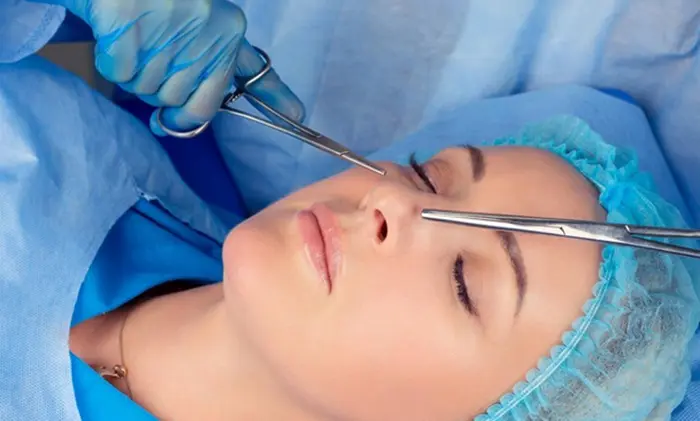Liquid rhinoplasty, also known as non-surgical rhinoplasty, is a popular cosmetic procedure. It involves the use of dermal fillers to alter the shape of the nose without surgery. Patients often choose this method for its minimal downtime and quick results. However, like all procedures, it has side effects, one of which is swelling. Understanding how long the swelling lasts and what to expect can help patients prepare for the recovery process.
What is Liquid Rhinoplasty?
Liquid rhinoplasty involves injecting dermal fillers into specific areas of the nose. These fillers, usually made from hyaluronic acid, temporarily reshape and contour the nose. This procedure is ideal for those looking to correct minor imperfections, such as a bump on the bridge of the nose or a slightly droopy tip. The results are immediate, making it a convenient option for many.
The Procedure and Immediate Aftercare
The procedure is typically quick, lasting around 15 to 30 minutes. After the injections, patients might notice immediate swelling. This is a natural response as the skin and tissues react to the filler and the injection process. Immediate aftercare includes applying ice packs to reduce swelling and avoiding touching or manipulating the nose.
Initial Swelling Phase
Swelling after liquid rhinoplasty is most pronounced in the first 24 to 48 hours. During this period, the nose may appear larger than anticipated due to the body’s inflammatory response. The degree of swelling can vary depending on several factors, including the amount of filler used, the technique of the injector, and the patient’s individual healing response.
See Also: How Much Does Rhinoplasty Cost?
Factors Influencing Swelling Duration
Type of Filler
Different fillers have varying properties that can influence the duration and extent of swelling. Hyaluronic acid fillers, such as Juvederm and Restylane, are commonly used and tend to cause moderate swelling. More viscous fillers might result in prolonged swelling.
Injection Technique
The skill and technique of the injector play a crucial role. A precise and gentle injection technique can minimize trauma to the tissues and reduce swelling. Experienced practitioners know how to distribute the filler evenly to avoid excessive swelling.
Patient’s Physiology
Each patient’s body responds differently to fillers. Factors such as skin thickness, blood flow, and overall health can impact how long swelling lasts. Patients with thinner skin may notice swelling more prominently, while those with robust blood flow might experience quicker resolution of swelling.
Managing Swelling
Proper management of swelling can improve comfort and expedite recovery.
Cold Compresses
Applying cold compresses intermittently during the first 24 hours can significantly reduce swelling. Cold constricts blood vessels, limiting fluid accumulation in the tissues.
Elevation
Keeping the head elevated, especially during sleep, can help reduce swelling. Gravity assists in preventing excess fluid buildup in the facial tissues.
Avoiding Heat and Strenuous Activity
Exposure to heat, such as hot showers or direct sunlight, can exacerbate swelling. Strenuous physical activity should be avoided for at least a few days post-procedure, as increased blood flow can prolong swelling.
Swelling Beyond the Initial Phase
While the most significant swelling typically subsides within the first 48 hours, residual swelling can persist for up to two weeks. During this period, patients may notice minor changes as the filler settles and the body continues to adapt. It’s essential to be patient and allow the body ample time to heal.
Signs of Complications
Although rare, complications can arise. Persistent or worsening swelling beyond two weeks may indicate an issue. Symptoms such as severe pain, discoloration, or asymmetry should prompt immediate consultation with the practitioner. These signs could suggest an infection, allergic reaction, or vascular compromise.
Long-Term Expectations
Once the swelling has fully resolved, patients can enjoy the full benefits of their liquid rhinoplasty. The results typically last between 6 to 18 months, depending on the type of filler used and individual metabolism. Regular touch-ups can help maintain the desired appearance.
Consulting with a Professional
Choosing a qualified and experienced practitioner is crucial for achieving optimal results with minimal side effects. During the consultation, patients should discuss their medical history, expectations, and any concerns about swelling and recovery. A good practitioner will provide personalized advice and aftercare instructions.
Conclusion
Swelling after liquid rhinoplasty is a natural and expected part of the recovery process. Understanding the typical duration and factors that influence swelling can help patients manage their expectations and recovery effectively. With proper care and patience, the temporary swelling will subside, revealing the enhanced contours and improved aesthetics of the nose. Always consult with a qualified medical professional to ensure safe and satisfactory outcomes.

